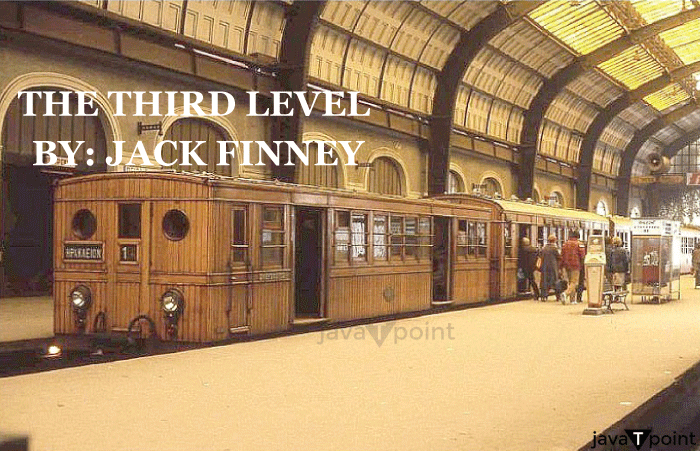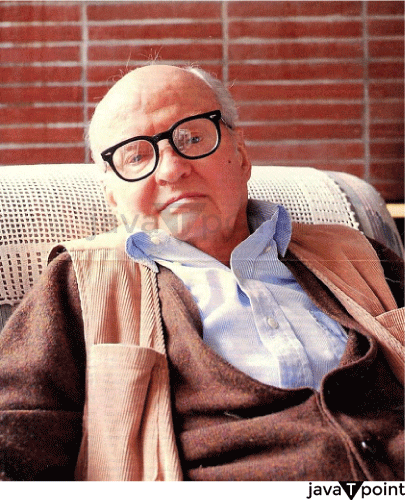Third Level SummaryThe brutal reality of war is Jack Finney's novel The Third Level. People experience insecurity as a result of the irrevocable effects of war. It also discusses contemporary issues and how the average person often uses different strategies to avoid reality. In this tale, Charley, a guy, gets a hallucination and ascends to the third level of Grand Central Station, which has only two floors. A 31-year-old guy named Charlie is the subject of the narrative. 
Additionally, this is a psychological tale that alludes to the underground under Grand Central Station that transports travellers to Galesburg. The narrator's brutal reality and his fantastical world are both connected by this underground. Additionally, Charley might escape to the third level. Since contemporary life is characterised by uncertainty, worry, and tension, it transports Charley to a different setting that his companion similarly refers to as "a walking dream wish fulfilment." In addition, Charley's propensity to run away from the world is a theme of the novel. The third level begins largely as a result of Sam's letter, written on July 18, 1984. This tale demonstrates how time and space are related. About the AuthorJohn Finney, Jack Finney's father, gave birth to him in Milwaukee, Wisconsin, on October 2, 1911. He passed away on November 16, 1995. In honour of his late father, who went away when he was only three years old, he was given the new name Walter Braden Finney. But he lived his whole life under the moniker Jack. He studied at Galesburg, Illinois' Knox College. Science fiction and thrillers are among his best-known genres. His books "The Body Snatchers" and "Good Neighbour Sam" served as the inspiration for two well-known films. 
In the anthology of short stories titled "The Third Level," Jack Finney first expressed an interest in time travel. Finney's science fiction book, "Time and Again," was his biggest hit. A short while after completing "From Time to Time," the follow-up to "Time and Again," Finney passed away at the age of 84 from pneumonia and emphysema. Characters of the StoryCharleyCharley, the Story's protagonist, is a good example of a modern guy. He wants to escape reality because he is a victim of stress, uncertainty, and dread. He wants to leave the world of hard truths because he is an escapist. He enjoys stamp collecting, a pastime he engages in to occupy his free time with more productive and satisfying activities. However, his doctor buddy refers to it as a transient haven from reality. He longs to live the beautiful, simple life of his grandfather's day when everything is beautiful and tranquil. He searches for the wonderful ordinariness of a bygone era, which was devoid of contemporary glitz, sophistication, and creature conveniences yet exuded calm and tranquilly. He desired to visit Galesburg, Illinois in 1894, which was both 20 and 40 years before the First and Second World Wars. He is a creative individual. He thus makes a voyage to the imaginary realm of Central Station's third level on the wings of his imagination. However, after locating it once, he and his wife are unable to locate it again. Charley is the ideal representation of the contemporary man since he is divided between the demands of a busy modern life and his desire to flee because he is unhappy. LouisaCharley's spouse is Louisa. She treats her hubby with affection and concern. She is a straightforward person, however, so taking her in is not difficult. The doctor tells her her husband is unhappy, but she won't believe him. She interprets this remark as a personal jab and is "a little bit mad" about it. When informed that the present world is rife with instability, worry, etc., she is content with the psychiatrist's justification. When Charley tells her about his situation at the third level, she becomes frightened and tells him not to continue looking for it. She expresses anxiety to Charley that her husband may be swapping the new money for the old, and she orders Charley strongly to cease searching for it. She joins Charley in searching for the third level every weekend when he informs her of Sam's disappearance. SamSam works as a psychiatric professional. He's your ordinary city kid. When Charley informs him about going to the third level, he explains that it was a desire that had come true while he was dreaming. He says that since he is unhappy, he is seeking methods to go away. He quickly backtracks on his claim that Charley is a victim of contemporary anxieties, however. He refers to the narrator's passion for stamp collecting as a brief escape from reality. He does not think it is proper to combine friendship with work. He is captivated by Charley's description of Galesburg, Illinois, as a lovely town with enormous lawns, grand old frame buildings, and magnificent trees bordering the streets. His thoughts of fleeing to the tranquil Galesburg of 1894 are influenced by the pulls and stresses of current life. In the end, he locates and enters Grand Central's third floor. From there, he sends Charley and Louisa a note encouraging them to keep looking for the third level since it is valuable. Charley claims that Sam must have established his little hay, feed and grain enterprises since he is unable to resume his previous line of work given that psychiatrists in Galesburg in 1894 are no longer needed. Synopsis of the StoryThe Third Level is a little story that illustrates how trauma may manifest inside and affect our mental health. Charley, the main protagonist, is a 31-year-old guy who works in an office to support himself like most others. He serves as the story's narrator and begins by telling us that New York's Grand Central Station has a third level. But according to his doctor, it satisfied a want from an awake dream. According to the doctor, the narrator was not happy with his life and was trying to forget his difficulties by daydreaming about a third level. Charley had to stay late once since he had work he needed to catch up on. He wanted to go home as fast as he could. He thus made the choice to ride the tube as opposed to the bus. Grand Central Station is only supposed to have two stories, but he accessed the third level. He found the third level unusual because of how antiquated both the infrastructure and the populace seemed to be. He soon learnt from a newspaper that the year was 1894. This was the era before the First and Second World Wars, he could remember. He walked to the desk to purchase two tickets for Galesburg, Illinois, but the clerk accused him of using false money and threatened to turn him into the authorities. In the same manner, he entered the station, and the storyteller fled from it. Charley purchased old-style cash for the same amount the next day after withdrawing virtually all of his $300. In 1894, he wanted to return to Galesburg, Illinois, to start a family with his wife Louisa, but he was never again able to find the third level. His wife became quite concerned when she heard everything and begged him not to hunt for the third level again. The narrator then went back to his interest in collecting stamps. He understood at that point that the third level was genuine. Sam, a buddy to whom he had often recounted tales of his youth spent in Galesburg, had vanished. Sam may have visited Galesburg in 1984, the narrator speculated. Charley was looking through his stamp collection one evening when he stumbled upon a note among one of his oldest first-day covers. It was dated July 18, 1894, and included his grandfather's residence in Galesburg, Illinois. But when he opened the envelope, he discovered that it was really a letter from Sam to him, in which he described how things were in 1894 and how he was relishing the time. Sam advised the narrator to keep looking since it would be worthwhile to find the third level. When the narrator went to the stamp and coin business, Sam had bought old-style currency for $800. Because he would not have been able to follow his true career, which was that of a psychiatrist, he believed that Sam might have settled down nicely with this amount of money in 1894 by making an investment in the food and grain industry. Theme of the StoryThe narrative of "The Third Level" follows the narrator on a psychological trip that starts in the present and continues into the past before ending in the future. Humans naturally have a tendency to go back and forth between the past, present, and future. The past, the present and the future are naturally and strategically linked to one another. Given that humans are mortal, there are many good and terrible elements of life, including love, gain, loss, good, and evil. The human mind is generally impacted by all these factors. Then, existential concerns operate as a stimulant, causing the human mind to jump ceaselessly between the past, present, and future. In this cycle, the human mind is examined in "The Third Level." People nowadays believe that life was less stressful fifty or sixty years ago and want to return to that era in order to find peace and happiness. This is because they feel that life was less stressful then. Conclusion of the StoryScience fiction is used as a motif in the intriguing narrative "The Third Level" to discuss the types of trauma individuals experienced in post-war society. The narrator of the narrative is dissatisfied with how the world is right now after the first two world wars. The narrator develops a coping strategy to deal with this sadness, which seems like an inner trauma. His propensity to flee the present by replacing it with a longing for a time when there were no conflicts emerges. He uses his imagination to construct a third level at Grand Central Station that transports him to a different period in 1894, which aids him in finding this escape.
Next TopicToasted English Summary
|
 For Videos Join Our Youtube Channel: Join Now
For Videos Join Our Youtube Channel: Join Now
Feedback
- Send your Feedback to [email protected]
Help Others, Please Share









